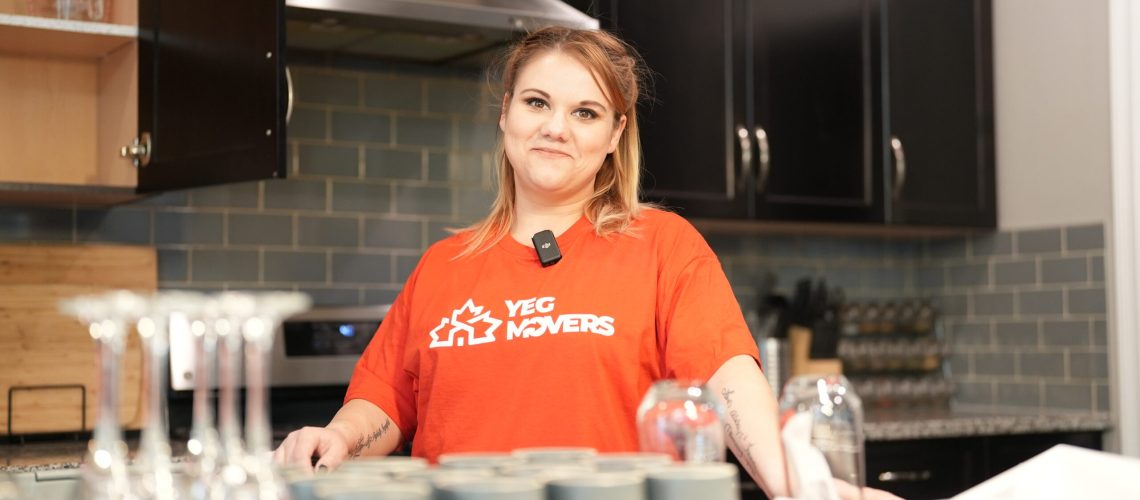Packing mugs for a move presents a common challenge: ensuring these fragile items reach your new home intact. It’s more involved than simply placing them in a box and hoping for the best. The process requires careful attention and appropriate materials to prevent breakage. Many homeowners underestimate the complexity of properly packing dishware, which is why Edmonton moving professionals often recommend specific techniques for safeguarding your favorite mugs. This guide offers practical advice to keep your cherished cups protected during transit to your new residence.
Gather Packing Supplies
Begin by collecting all necessary packing supplies for safely transporting your mugs. Start with durable cardboard boxes in various sizes to accommodate your collection. Ensure the boxes are clean and structurally sound to provide adequate protection. Gather packing paper or bubble wrap to cushion each mug and prevent them from making contact with each other during transit. Have packing tape ready to secure the boxes once filled.
You’ll also need markers to label boxes with “fragile” indicators or clear markings showing they contain delicate items. This alerts anyone handling the boxes to exercise caution. Creating a packing checklist helps ensure you have all the required supplies before starting. Proper preparation streamlines the packing process and increases the likelihood your mugs will arrive safely at your new home.
Wrap Each Mug Carefully
To ensure your mugs survive the move undamaged, wrap each one individually with care. Start with a stack of clean packing paper or bubble wrap. Place a sheet on a flat surface and position a mug in the center. Pull the corners up and over the mug until completely covered. Secure the wrapping with tape. For additional protection, add a layer of bubble wrap after the initial paper covering, taping it securely as well.
When packing multiple mugs, you can stack them inside one another with a layer of packing material between each to prevent direct contact. The key is ensuring each mug sits snugly within its protective wrapping to minimize breakage risk during transport.
Use Dividers in Boxes
Implementing dividers in your packing boxes provides crucial protection and prevents mugs from shifting during transit. Dividers create individual compartments for each mug, reducing the risk of breakage from contact. Consider these tips for effective divider use:
- Choose Sturdy Dividers: Select thick cardboard dividers or cell kits designed specifically for mugs. These should be robust enough to support the weight of your mugs while providing sufficient cushioning.
- Secure Dividers in Place: After positioning dividers in the box, secure them with tape or packing material. This prevents shifting during transport and maintains protection for your mugs.
- Fill Empty Spaces: Maximize protection by filling any gaps between mugs and box walls with additional packing material, preventing movement and reducing breakage risk.
Fill Empty Spaces
When packing mugs, eliminate all empty spaces within the box to prevent shifting and protect against breakage. Use materials such as bubble wrap, packing peanuts, or even towels and clothing to fill gaps between mugs. These materials provide cushioning and keep mugs secure during transport.
Before placing mugs in the box, line the bottom with a layer of cushioning material. Wrap each mug individually for additional protection. As you arrange mugs in the box, fill remaining spaces with more cushioning to ensure they remain immobile during transit.
Label Boxes With Fragile Items
Clearly mark all boxes containing mugs and other delicate items for easy identification throughout the moving process. When labeling fragile boxes, ensure markings are highly visible. Consider these important practices:
- Use Bold and Clear Labels: Apply bold labels clearly stating “Fragile” or “Handle with Care” on all sides of the box. This signals movers to exercise caution with these containers.
- Include Specific Instructions: Add directional guidance such as “This Side Up” or “Do Not Stack” to prevent accidental damage during transport.
- Color-Code Boxes: Implement color-coded labels or stickers for fragile items to distinguish them from other boxes. This helps movers prioritize these containers and handle them with appropriate care.
Other Related Articles:
– How to Transport Pet Fish When Moving
– How to Pack Legos for Moving


